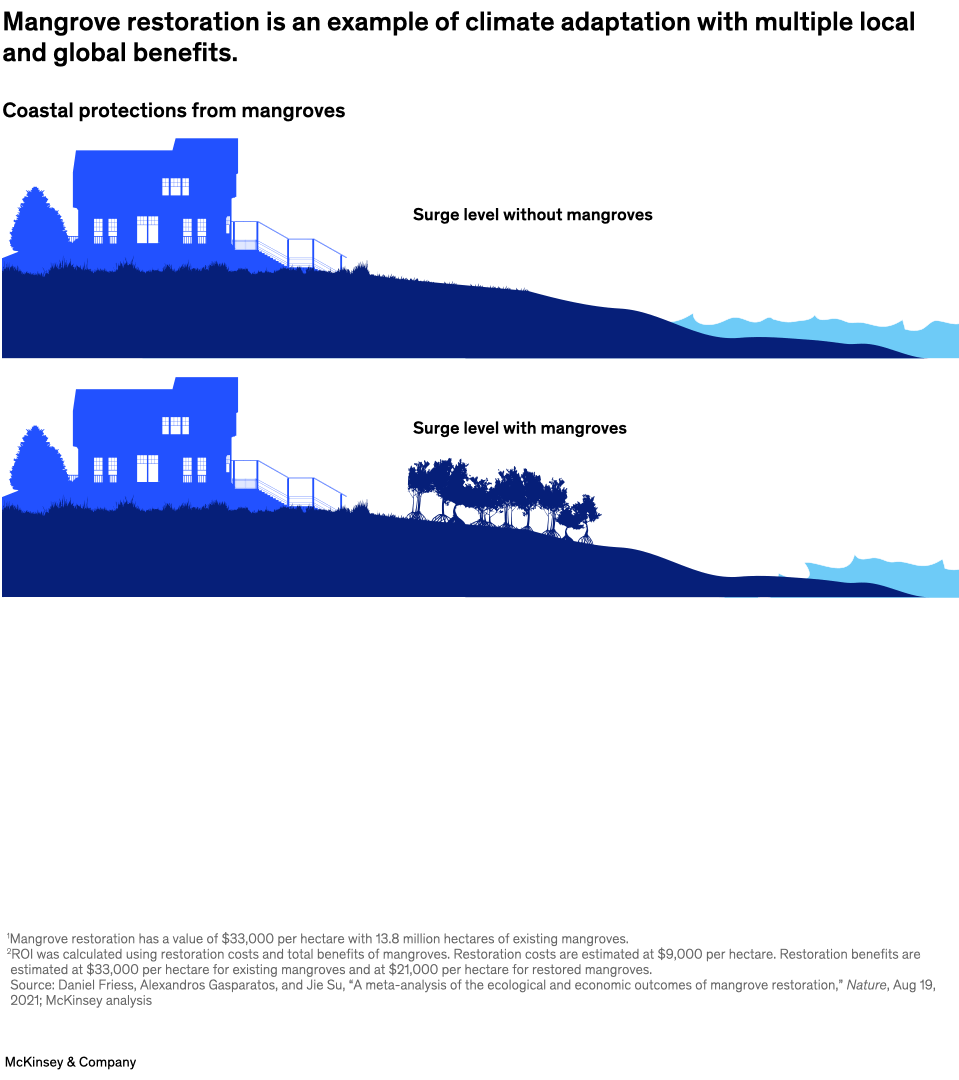Accelerating climate change is giving rise to extreme weather events that could threaten the habitability of some of the planet’s most populated areas and force changes in many communities. In the face of this huge challenge, countries have developed national adaptation plans covering a wide range of responses. Managing partner for global client capabilities Homayoun Hatami and senior partner Hamid Samandari note that some measures offer benefits for both adaptation and the parallel effort to limit or reduce greenhouse gases. One example: a hectare of mangroves can store 1,000 tons of carbon on average, and at the same time prevent soil erosion and protect coastlines and infrastructure.

Image description:
A row of three area charts shows national climate adaptation plan metrics as of June 2023. The first chart shows that 128 of 198 countries have adaptation plans. The second chart shows that national adaptation plans cover 61% of the world economy. The third chart shows that national adaptation plans cover 65% of the world population. Stacked vertical bar charts, which appear below these 3 charts, show new adaptation plan publications by affiliation per 3-year period from 2007 to 2022. The affiliations include the United Nations Framework Convention on Climate Change (UNFCCC), EU, and other. The charts show an increase in national adaptation plans throughout the years.
Footnote 1: 197 independent nations according to UNFCCC signatories, plus the state of Kosovo.
Footnote 2: Based on 2021 global GDP and population.
Source: UNFCCC; World Bank; McKinsey analysis.
End of image description.
To read the article, see “Paving the way to resilience: Strengthening public sector adaptation planning and execution,” November 27, 2023.